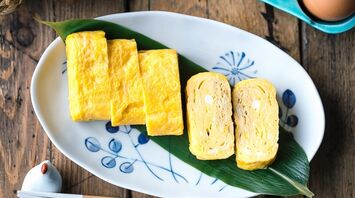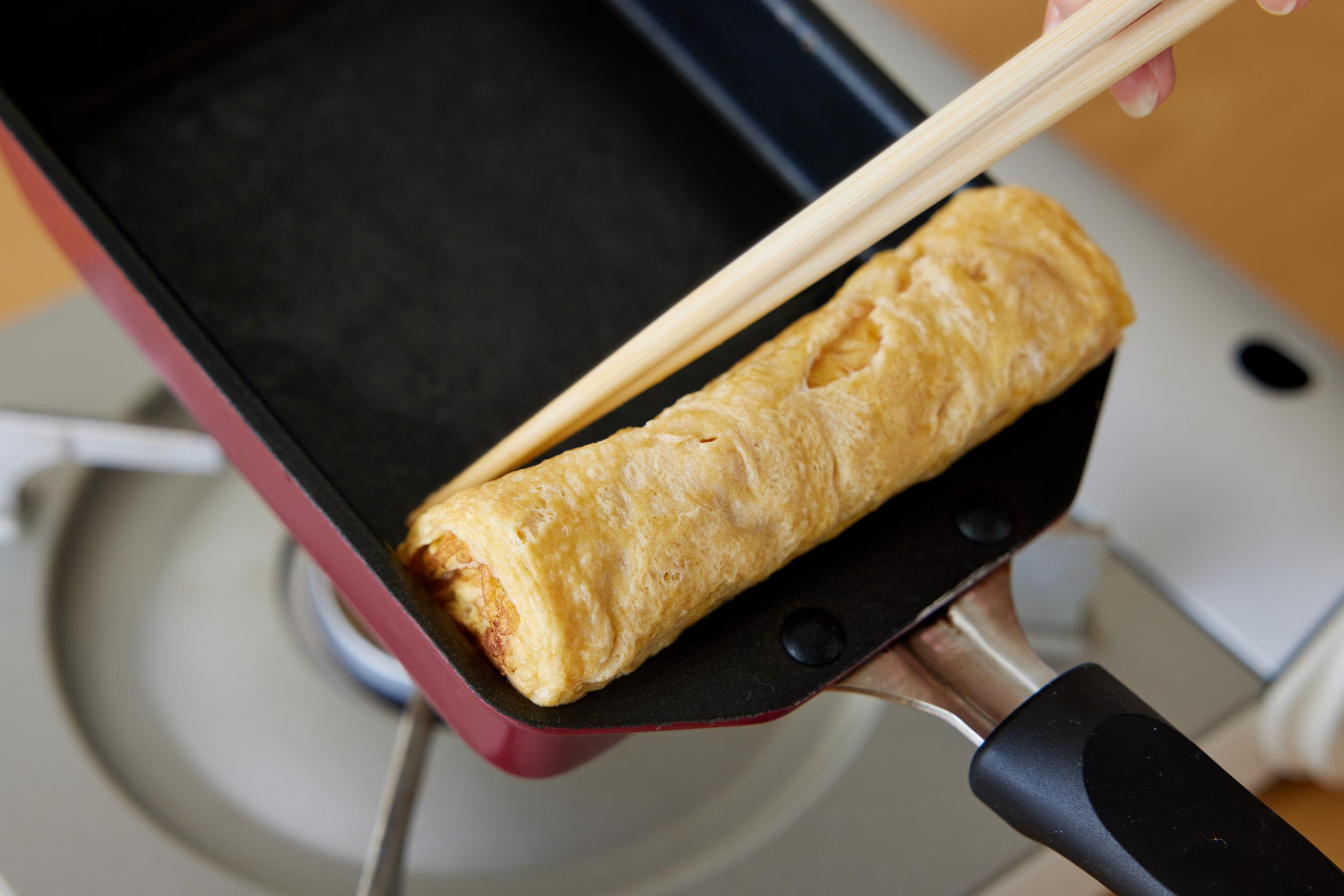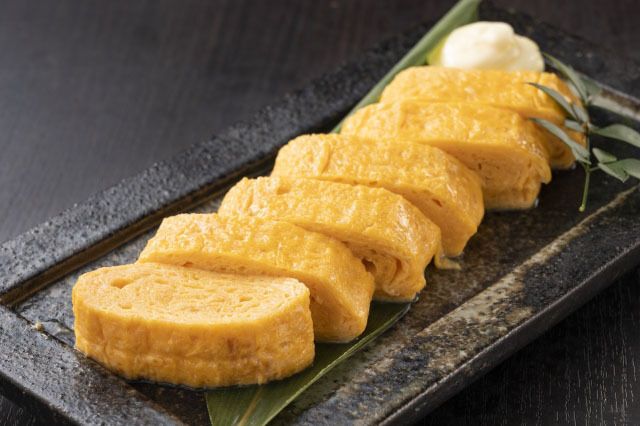Tamagoyaki: Japanese rolled omelet

Tamagoyaki is a classic Japanese dish characterized by its soft and delicate texture. The process of rolling and flipping the eggs might seem challenging, but with a bit of practice, it's certainly manageable. Essentially, tamagoyaki is a slightly sweetened egg omelet rolled and seasoned with soy sauce, mirin, and dashi. In Japanese, "tamago" means egg, and "yaki" means grill. SSP has prepared a recipe.
Ingredients
- 1/4 cup warm water
- 1/4 teaspoon instant dashi powder (e.g., Ajinomoto Hondashi)
- 4 large eggs2 teaspoons sugar
- 1/2 teaspoon kosher salt
- 1 teaspoon soy sauce
- 1 teaspoon mirin
- 1 tablespoon canola oil
- Grated daikon, for serving (optional)
Method

1. Prepare the Dashi Stock: Combine 1/4 cup warm water with the dashi powder in a small bowl or glass measuring cup. Stir with a fork until the dashi is fully dissolved. Warm water aids in dissolving the powder, but room temperature or cold water is fine too.
2. Beat the Eggs: In a medium-sized bowl, beat the 4 eggs with sugar and salt using a fork until uniformly blended. Aim to avoid creating too many bubbles.
3. Season the Eggs: Add the prepared dashi stock, soy sauce, and mirin to the beaten eggs. Mix thoroughly to incorporate these flavors.
4. Optional Straining for Silky Texture: For a smoother, more custard-like texture, strain the mixture through a fine mesh sieve placed over a liquid measuring cup. This step also makes it simpler to pour the egg batter into the pan.
5. Prepare the Pan: Use a small bowl or paper towel dipped in canola oil to lightly grease a kotobuki tamagoyaki pan or a small nonstick skillet. Heat the skillet on medium-high until it's ready to cook the eggs but not so hot that the eggs brown immediately. Once heated, reduce to medium-low.
6. Cook the First Layer: Pour a small amount of egg batter into the pan to cover the bottom. Cook until mostly set, but still slightly liquid on top. Using chopsticks or a thin spatula, begin rolling the egg from one side to the other. It’s okay if the initial rolls look wrinkled or uneven.

7. Add More Layers: Wipe the pan with the oil-saturated paper towel to re-grease. Add another layer of egg batter into the pan, again just enough to cover the bottom. Slightly lift the previously cooked egg to allow the new batter to flow underneath. Once set but still slightly liquid on top, roll the egg layer in the opposite direction. Repeat this for one more layer, by which time approximately half of the batter will be used.
8. Repeat and Finish: Transfer the tamagoyaki onto a serving plate or cutting board. Continue by cooking the remaining batter following the same process.
9. Serve: Cut the tamagoyaki into 1-inch slices, showcasing the beautiful swirls inside. Serve with grated daikon radish if desired or part of a larger Japanese meal. Stored leftovers can last in the refrigerator for 3-4 days and can be enjoyed cold or reheated in the microwave for about 15 seconds.

Earlier, SSP shared shakshuka with peppers, feta, and olives recipe



















